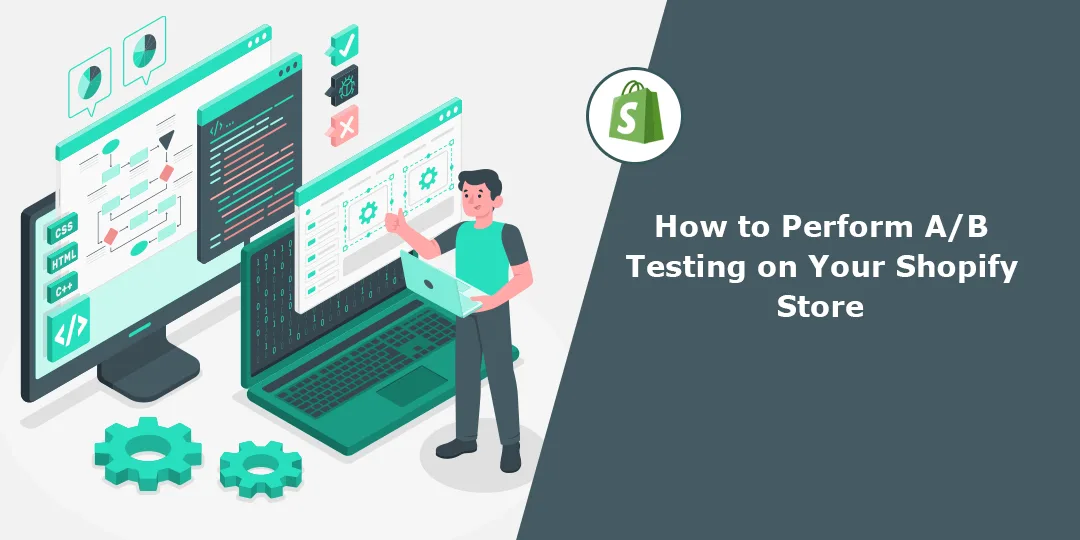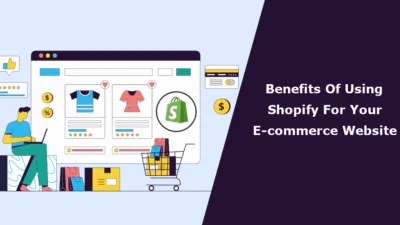As a savvy Shopify store owner, you constantly seek ways to improve your online presence, boost conversions, and enhance the overall user experience. One powerful technique that can help you achieve these goals is A/B testing.
In this article, we will explore the world of A/B Testing and how you can set up A/B Testing for the Shopify store.
What is A/B Testing?
A/B testing, also known as split testing, is a method to compare two different versions of a webpage or marketing material (Version A and Version B) to determine which one performs better in achieving a specific objective or goal. It is a systematic way of experimenting with changes to your content, design, or user experience to understand which variation leads to more favorable outcomes.
Benefits of A/B Testing in Your Shopify Store
- Data-Backed Decision Making: A/B testing eliminates guesswork and relies on real data to make informed decisions about your website’s performance and marketing strategies.
- Improved Conversion Rates: By identifying the most effective elements and layouts, you can optimize your Shopify store to drive more conversions and boost sales.
- Enhanced User Experience: A/B testing helps you understand what resonates with your customers, allowing you to create a seamless and engaging user experience.
- Reduced Bounce Rates: Discover the best combination of elements that reduce bounce rates and encourage visitors to explore your store further.
- Continuous Optimization: A/B testing is an iterative process, allowing you to continuously fine-tune your Shopify store for better performance.
A/B Testing vs. Multivariate Testing
A/B testing and multivariate testing are two different methods used in marketing and web development to experiment with different variations of web pages or marketing materials. While both aim to improve user experience and optimize conversion rates, they differ in how they compare variations and the complexity of their setups.
| Point of Difference | A/B Testing | Multivariate Testing |
| Definition | A/B testing, also known as split testing, involves comparing two versions of a webpage or marketing element (Version A and Version B) to see which one performs better. | Multivariate testing involves testing multiple variations of multiple elements on a webpage simultaneously to find the best combination. |
| Variations | A/B testing compares only two variations at a time. Each version typically contains a single change in an element (e.g., changing the color of a button, altering the headline, or adjusting the image). | Instead of comparing two versions, multivariate testing compares multiple versions of different elements on the same page (e.g., testing different headlines, images, and button colors all at once). |
| Traffic Division | The audience is divided into two random groups, and one group is exposed to Version A, while the other group sees Version B. | The audience is divided into various segments, and each segment is exposed to a different combination of variations. This requires a more complex setup to ensure statistically significant results. |
| Objective | A/B testing is used to test specific hypotheses or ideas in a controlled environment, with a focus on identifying which version leads to a better performance based on a single primary metric (e.g., conversion rate). | Multivariate testing is used to understand how different elements interact with each other and find the most effective combination of changes to improve overall performance. |
What to A/B Test in Shopify?
Here are some specific elements you can A/B test in your Shopify store:
- Product Page Layout: Test different product page layouts, such as the placement of product images, product descriptions, customer reviews, and CTA buttons, to see which arrangement leads to more conversions.
- Call-to-Action (CTA) Buttons: Experiment with different button colors, text, size, and placement on product pages and throughout your store to find the most effective CTAs encouraging users to add items to their carts or complete purchases.
- Product Images: Test various product images, such as different angles or lifestyle shots, to determine which ones resonate better with your customers and drive more engagement.
- Pricing and Discounts: A/B test different pricing strategies, discount offers, and promotions to identify which ones lead to increased sales and higher average order values.
- Homepage Design: Try different layouts, banners, and featured product sections on your homepage to see which design attracts more visitors and encourages them to explore further.
- Navigation Menu: Experiment with different navigation styles and menu structures to make it easier for customers to find the products or categories they are interested in.
- Checkout Process: Optimize the checkout process by testing different checkout page layouts, the number of steps, progress indicators, and payment options to reduce cart abandonment rates.
- Shipping and Payment Options: Test different shipping and payment methods to determine which options your customers prefer and result in higher conversion rates.
- Trust Elements: A/B test trust-building elements, such as trust badges, security seals, customer reviews, and guarantees, to build confidence and credibility with your audience.
- Product Descriptions: Experiment with different product descriptions to see which ones provide more helpful information and drive more conversions.
- Email Marketing: Test different email subject lines, content, and visuals in your email marketing campaigns to improve open rates and click-through rates.
- Pop-ups and Overlays: Test the timing, content, and design of pop-ups and overlays, such as newsletter sign-ups or exit-intent pop-ups, to see which ones capture more leads or reduce bounce rates.
How to Perform A/B Testing on Shopify Store?
Here’s a step-by-step guide on how to conduct A/B testing on your Shopify store:
Step 1: Define Your Objective
Clearly identify the goal of your A/B test. It could be improving click-through rates, increasing conversions, boosting average order value, or enhancing the user experience.
Step 2: Choose an A/B Testing Tool
Shopify offers some A/B testing apps that integrate with your store. Research and select the one that best suits your needs. Some popular A/B testing apps for Shopify include “AB Tasty,” “Optimizely,” and “Lucky Orange.”
Step 3: Identify the Element to Test
Decide on the specific element or elements you want to test. This could include the headline, product images, call-to-action buttons, pricing, layout, or any other component that may influence user behavior.
Step 4: Create Variations
With your A/B testing tool, create different versions of the web page (A and B) with the specific element you want to test changed in one of the versions. Keep everything else constant between the two versions to ensure accurate results.
Step 5: Set Up the Test
Set up the A/B test using your chosen app. Define the percentage of traffic that each variation will receive and specify the metric you want to track (e.g., conversion rate, bounce rate, revenue, etc.).
Step 6: Run the Test
Launch the A/B test and allow it to run for a sufficient duration to gather enough data. The length of the test will depend on your website traffic, but running it for at least a week is a good starting point.
Step 7: Analyze the Results
Once the test is complete, analyze the data to determine which variation performed better for your defined metric. Most A/B testing tools provide statistical significance indicators to ensure the results are reliable.
Step 8: Implement the Winning Variation
If one version clearly outperforms the other and the results are statistically significant, permanently implement the winning variation on your Shopify store.
Step 9: Continuous Testing and Optimization
A/B testing should be an ongoing process of continuous improvement. Regularly test different elements of your website to optimize and enhance the overall performance and user experience.
Final Say
A/B testing is a game-changer for Shopify store owners who seek data-driven decision-making and continuous optimization. By experimenting with different elements, you can unlock the potential of your Shopify store, attract more customers, and maximize your revenue.
Remember that A/B testing requires careful planning and patience. Avoid testing multiple elements simultaneously, as this can lead to inconclusive results. Focus on one element at a time to get clear insights into its impact on your store’s performance.
Embrace the power of A/B testing and watch your Shopify store thrive in today’s competitive e-commerce landscape by hiring a Shopify expert.
Happy testing!












